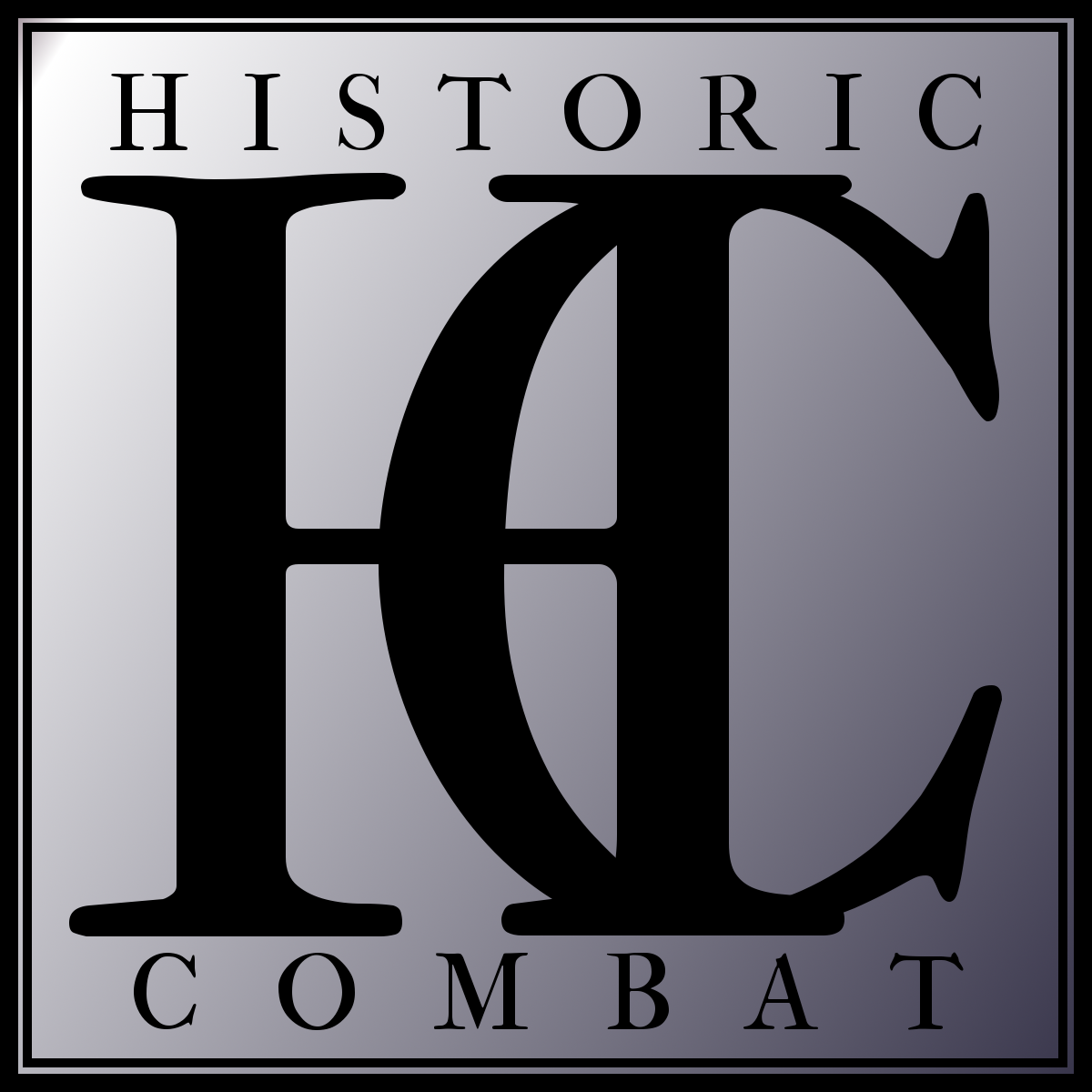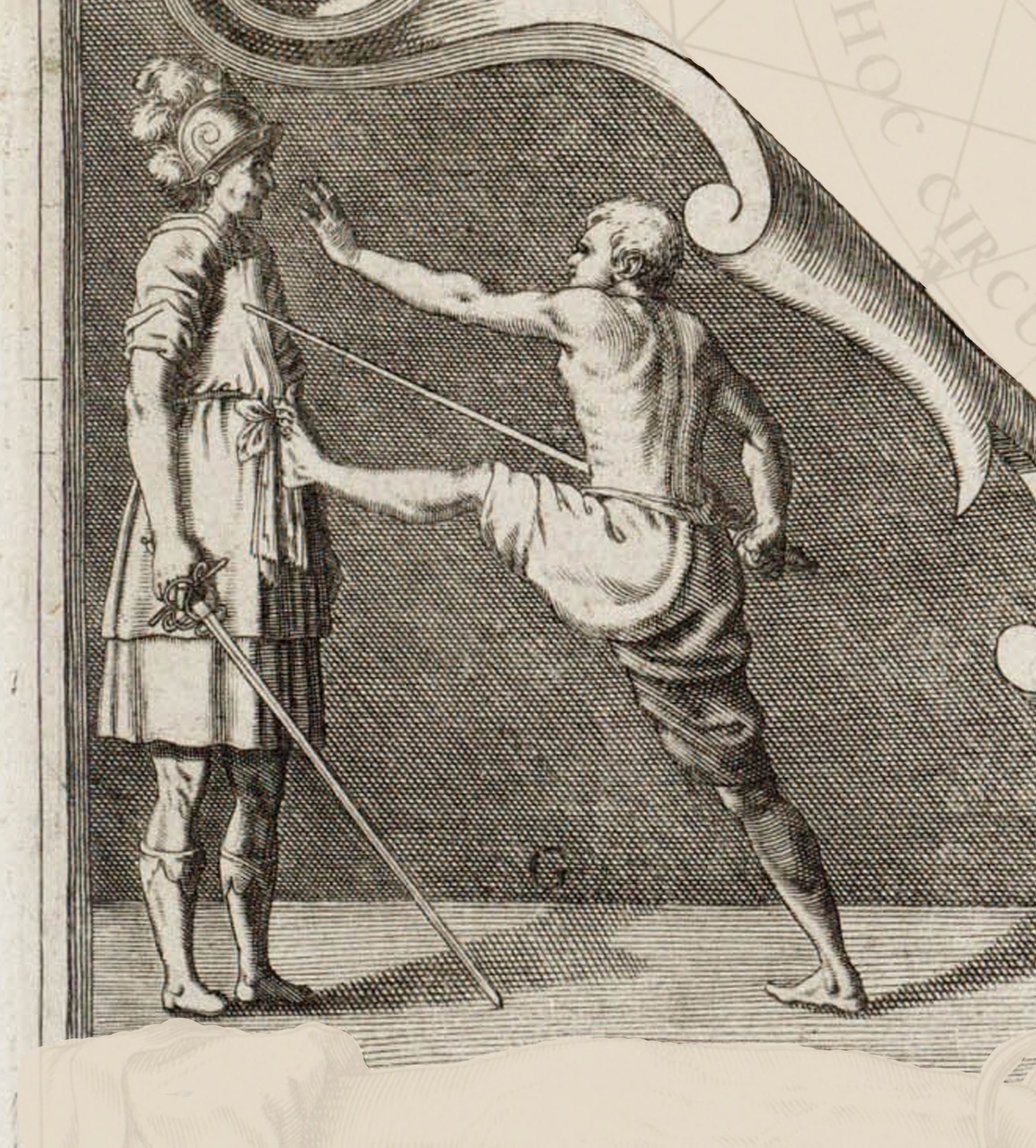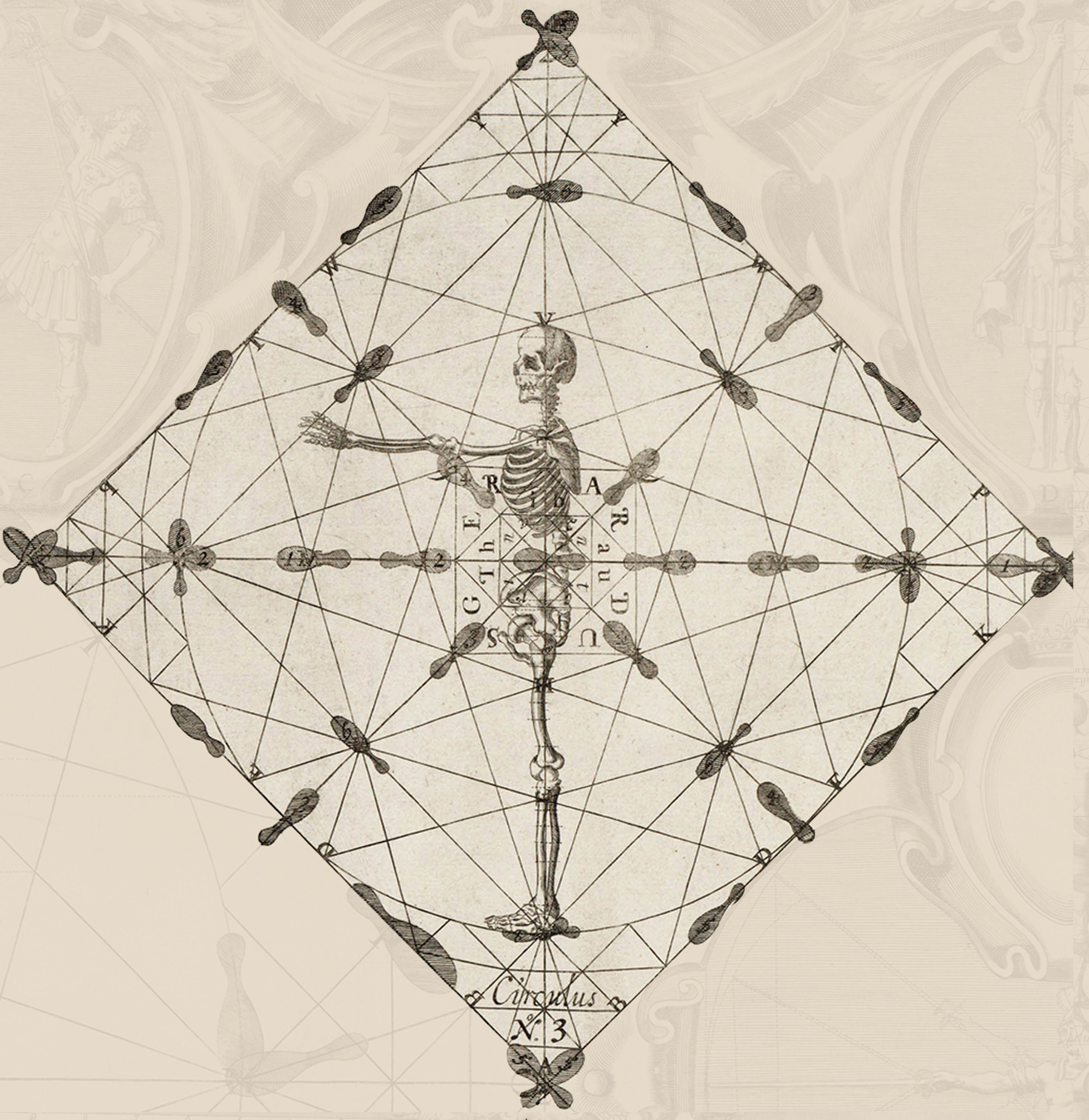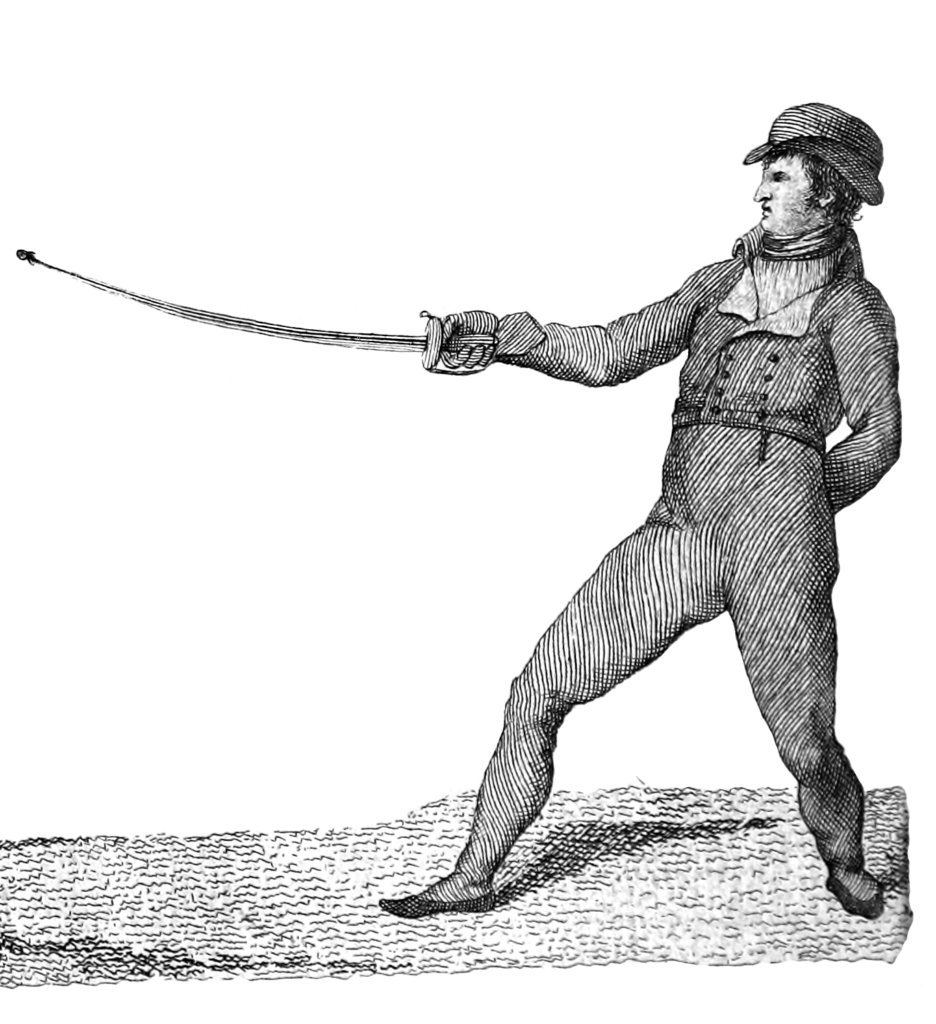The following geometric construction is based on the directions given by Gerard Thibault in Chapter 1, section 3 which, in the John Michael Greer translation is given the heading “The manner of laying out the circle on the ground, with all its appurtenances.”
In these instructions, rather than reproducing Thibault’s flowery prose, I have endeavored to give a simple and straight forward description accompanied by step by step illustrations.
It is worth noting that, although this is referred to in a number of different sources as Thibault’s “magic circle,” Thibault himself never used that term, calling it, instead the “mysterious cricle” or simply “the circle.” In point of fact, he doesn’t appear to assign any particular importance to the circle beyond that of its utility as a means of describing movement and position.
If you want to just jump to the video , you can watch that here. Of you prefer written instructions, see below.
Without further ado, then, here are the drafting instructions
Determine the Radius and Draft the Circle

The radius should be equal to the length of your sword from the point to the cross. Thibault describes this as also being equal to the distance from the ground to your navel.
You can also find the correct diameter for your height using this calculator:
Draft the diameter

The line should pass through the center of the circle and extend past the circumference of the circle by about two foot lengths. Label the intersections of the Diameter with the Circle ‘C’ and ‘X’ as shown above.
Set up and Draft the Perpendicular Diameter
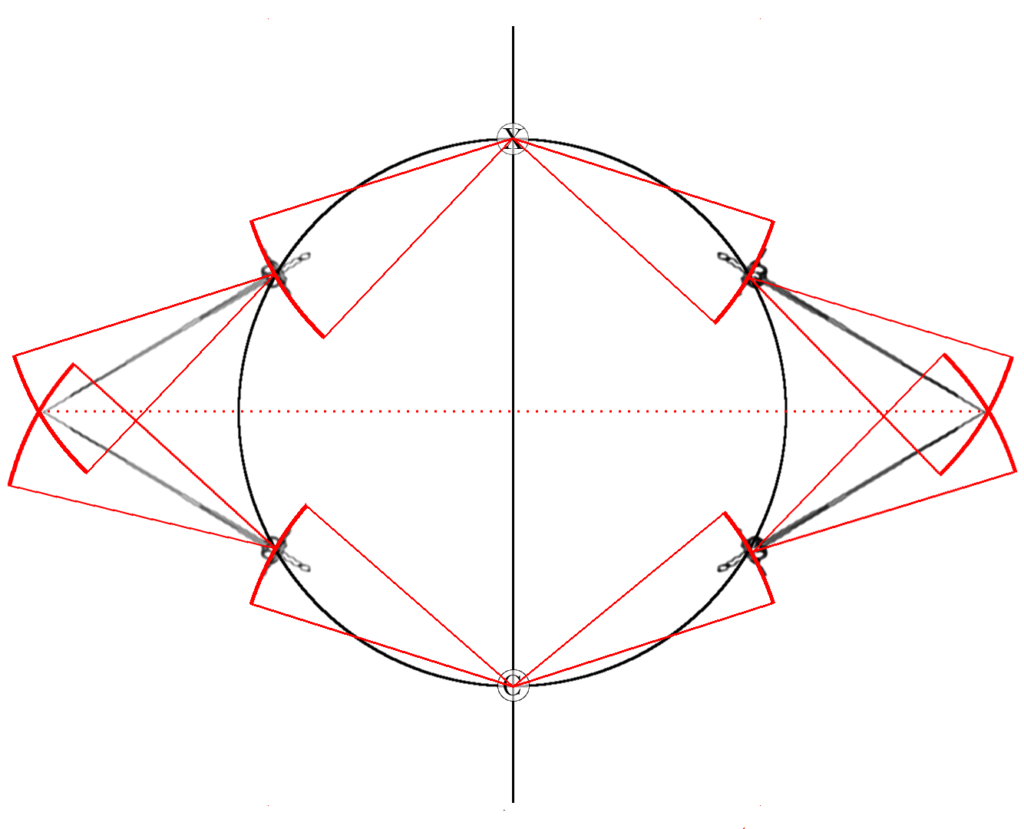
To set up the Perpendicular Diameter, take a set of arcs centered on points C and X respectively. These arcs will each have a radius equal to that of the Circle (one sword length). Mark where each of these arcs intersect the Circumference. At each of these intersections, you will take another arc of the same size. Mark where these secondary arcs intersect each other outside of the Circumference to the left and right. A construction line connecting the two outer intersections denotes where the Perpendicular Diameter will be drafted. The Perpendicular Diameter should extend two foot lengths past the Circumference at each end.
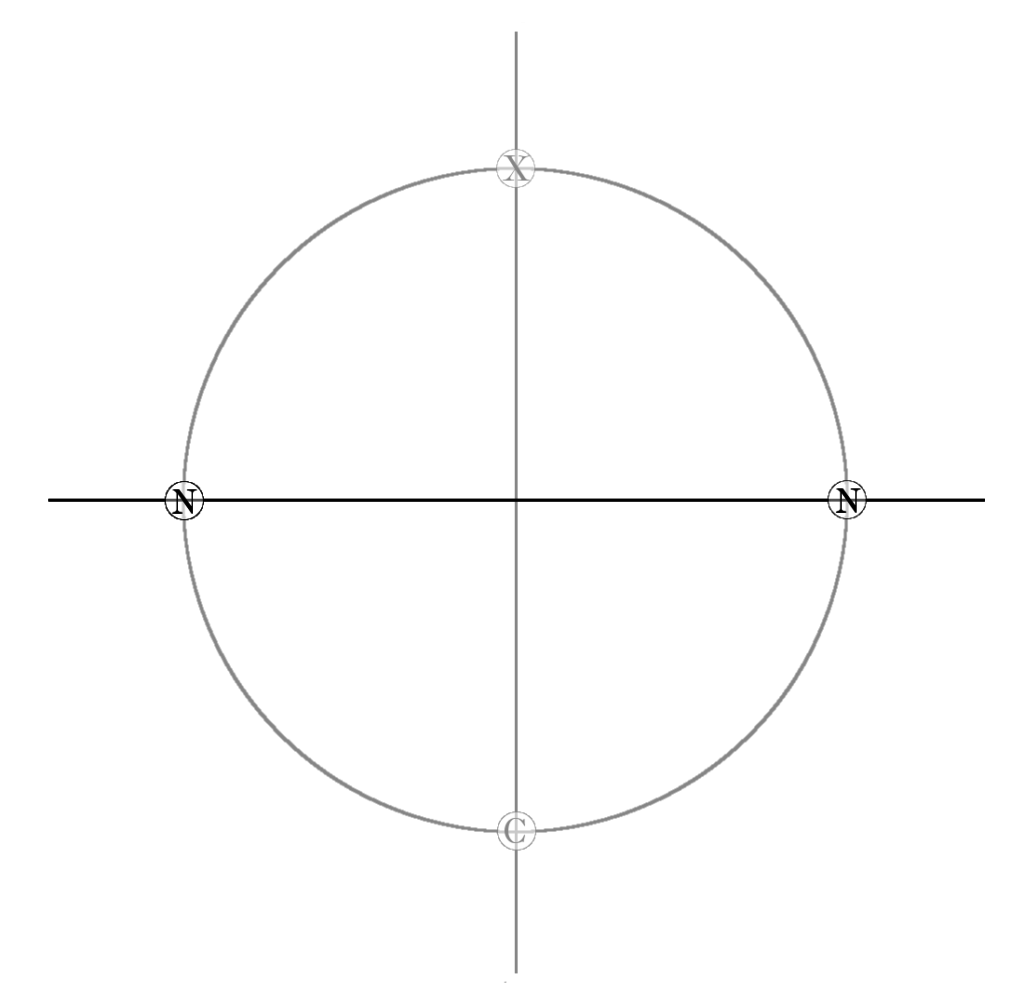
Label the points where the Perpendicular Diameter intersects the Circumference with the letter N on each side of the Diameter.
Set up and Draft the Oblique Diameters

Prepare to draft the Oblique Diameters by centering a set of arcs centered around points C, X, N, and N, each with a radius of one sword length. Mark the intersections of arc C with arc N on each side and the intersections of arc X and arc N on each side.
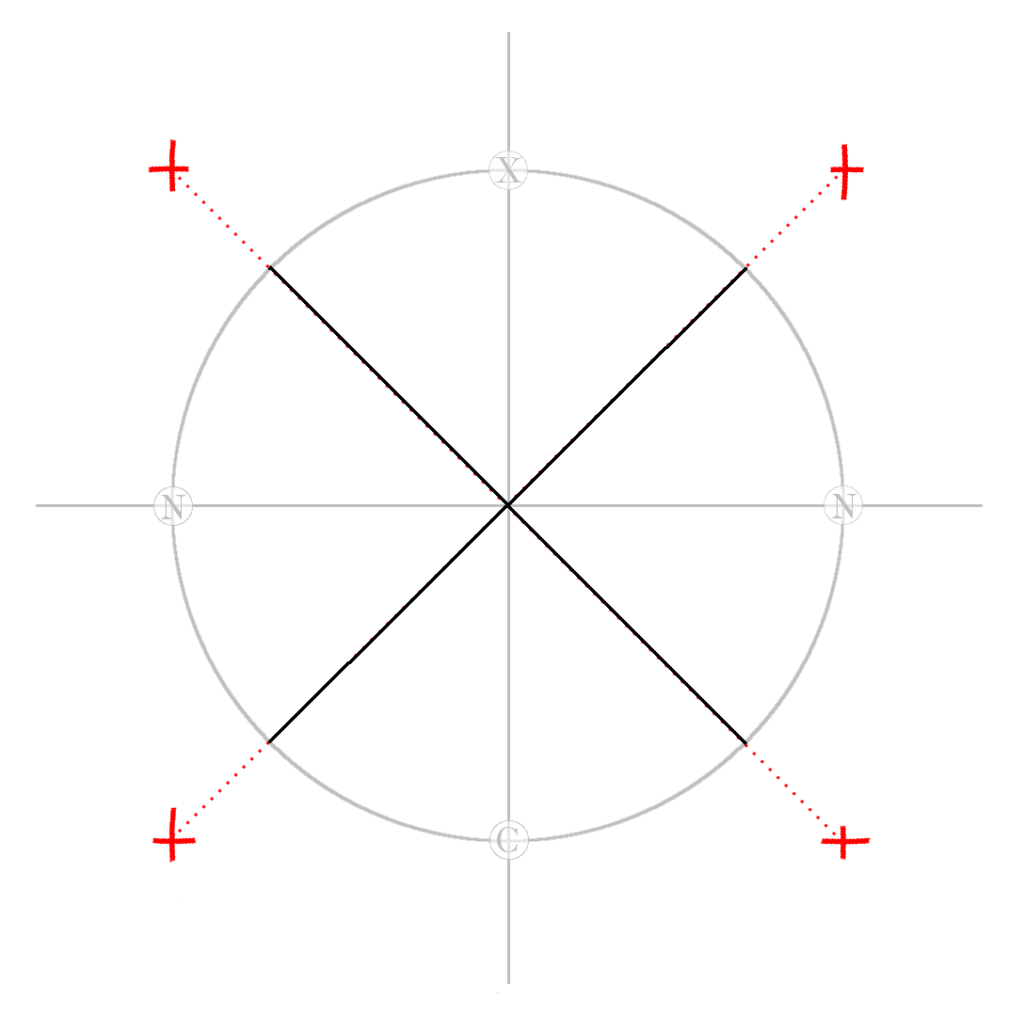
Draft the Oblique Diameters along straight lines connecting the upper left intersection and the lower right intersection and along the lines connecting the upper right intersection to the lower left intersection. Each of the Oblique Diameters should terminate at the Circumference.
Set up and Draft the Circumscribed Square
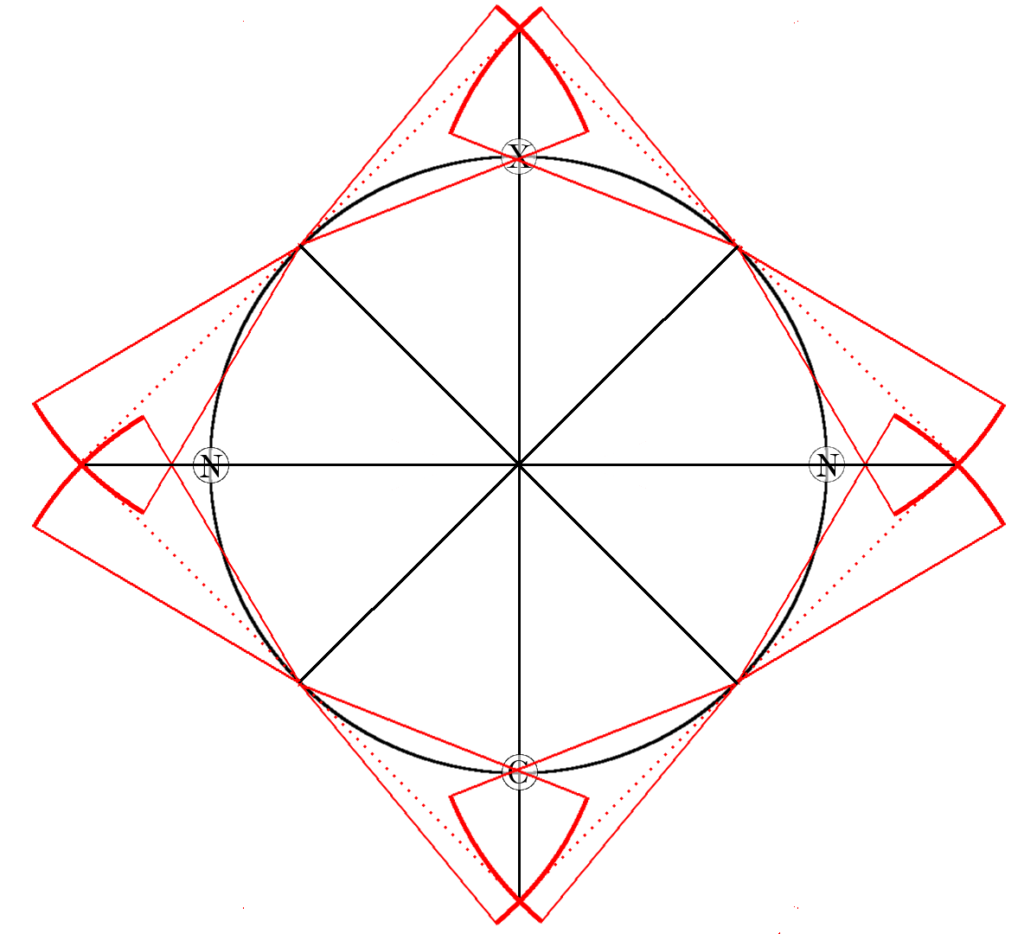
We’ll set up the Circumscribed Square with a final set of arcs. As usual, these arcs will each be one sword length in radius. They will be centered around the intersections of the Oblique Diameters with the Circumference. Mark where these arcs intersect the ends of the Diameter and the Oblique Diameter. Connect these intersections to form a square surrounding the Circumference.

Once you’ve finished drafting the Circumscribed Square, label the four corners ‘A’, ‘O’, ‘Z’, and ‘O’ as indicated above.
Draft the Inscribed Square

From this point on, it’s largely a connect-the-dots exercise. To draft the Inscribed Square, draw lines through point C and point N on each side and through point X and point N on each side. These lines should terminate at the Circumscribed Square. Mark the points where the Inscribed Square intersects the Oblique Diameters with the letters S and G as shown above.
Draft the Inner Collaterals

The Inner Collaterals extend through point C and point S on each side of the Diameter and through point X and point G on each side of the diameter, terminating at the Circumscribed Square.
Draft the Inner Transverses

The Inner Transverses run through point N on one side of the Diameter and points S and G on the opposite, terminating at the Circumscribed Square.

Label the points where the Inner Collaterals intersect at the Perpendicular Diameter with the letter L. the points where the Inner Transverses intersect at the Diameter should be labeled with the letters R and H. The intersections of the Inner Collaterals with the Inner Transverses at the Oblique Diameters should be lettered Q and I.
Draft the Outer Transverses
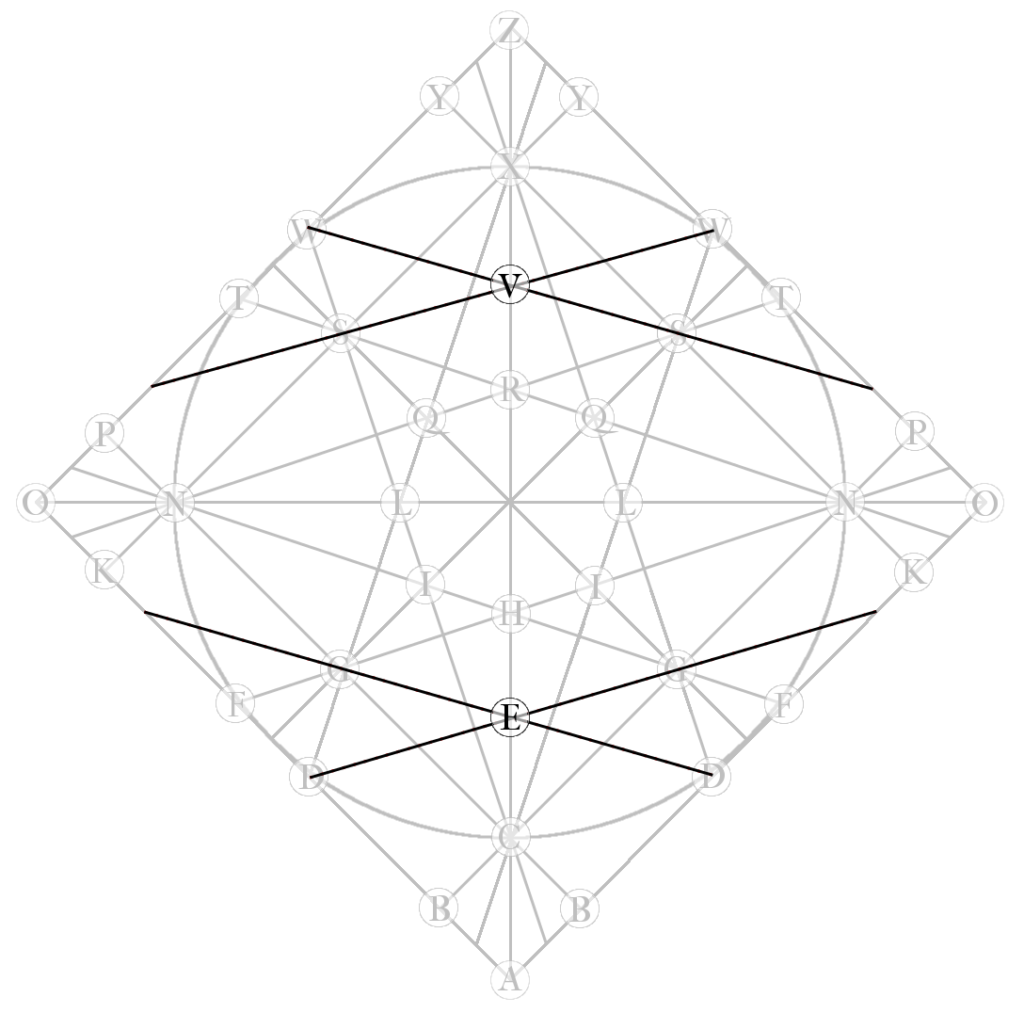
The Outer Transverses below the Perpendicular Diameter extend from Point D on each side of the Diameter through point G on the opposite side. Label the intersection of these two lines with the letter E. Similarly, the Outer Transverses above the Perpendicular Diameter extend from point W through point S, and their intersection is labeled with the letter V as shown above.
Draft the Outer Collaterals

The Outer Collaterals extend from point T through point G and from point F through point S on each side of the Diameter as shown above. Their intersections are labeled with the letter M.
Draft the Diagonals of the Quadrates

The remaining lines are drafted exclusively in the spaces outside of the Circumference and inside the Circumscribed Square. The set first of these lines is the Diagonals of the Quadrates which connect points B to B, Y to Y, and points P to K on each side of the Diameter.
Draft the Foot Lines
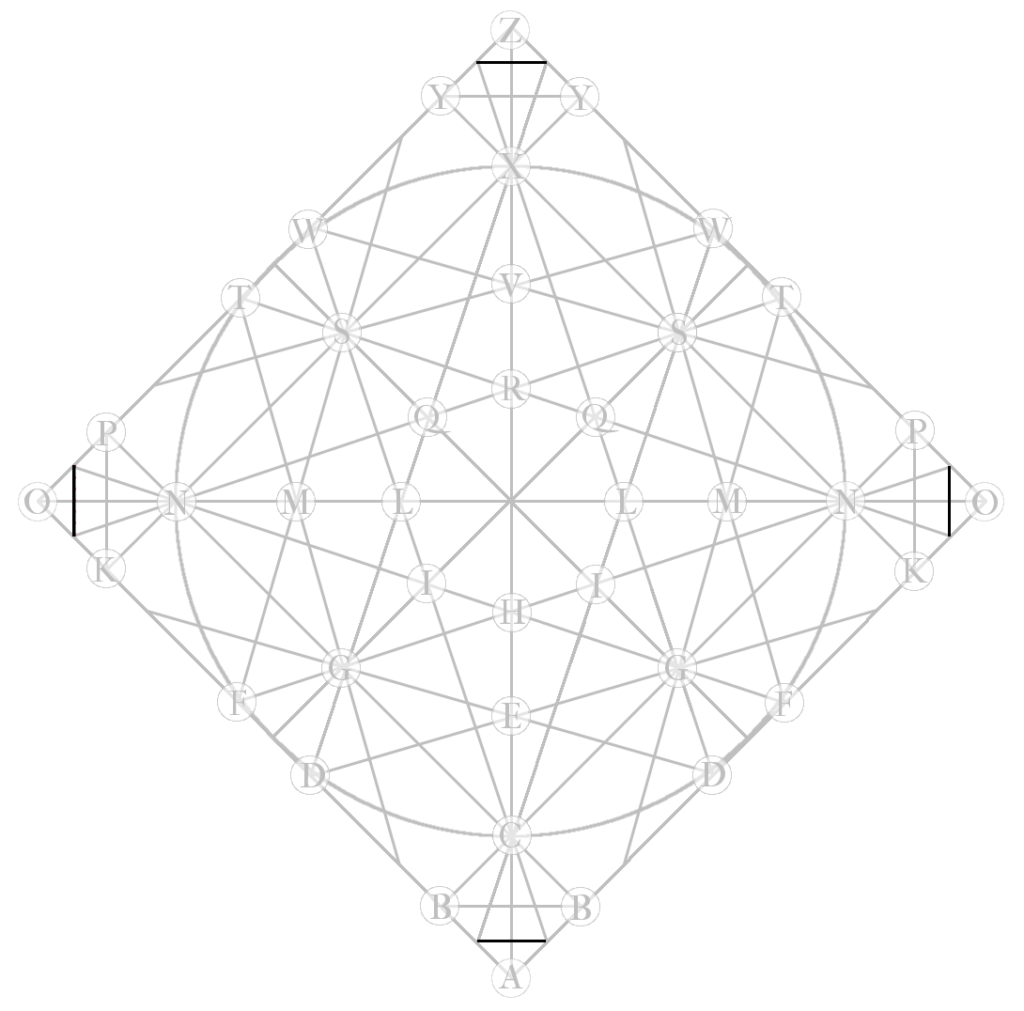
The foot lines are drawn parallel to the Diagonals of the Quadrates and connect the ends of the Inner Collaterals near points A and Z and the ends of the Inner Transverses near point O on each side of the Diameter.
Draft the Lengths of the Quadrates
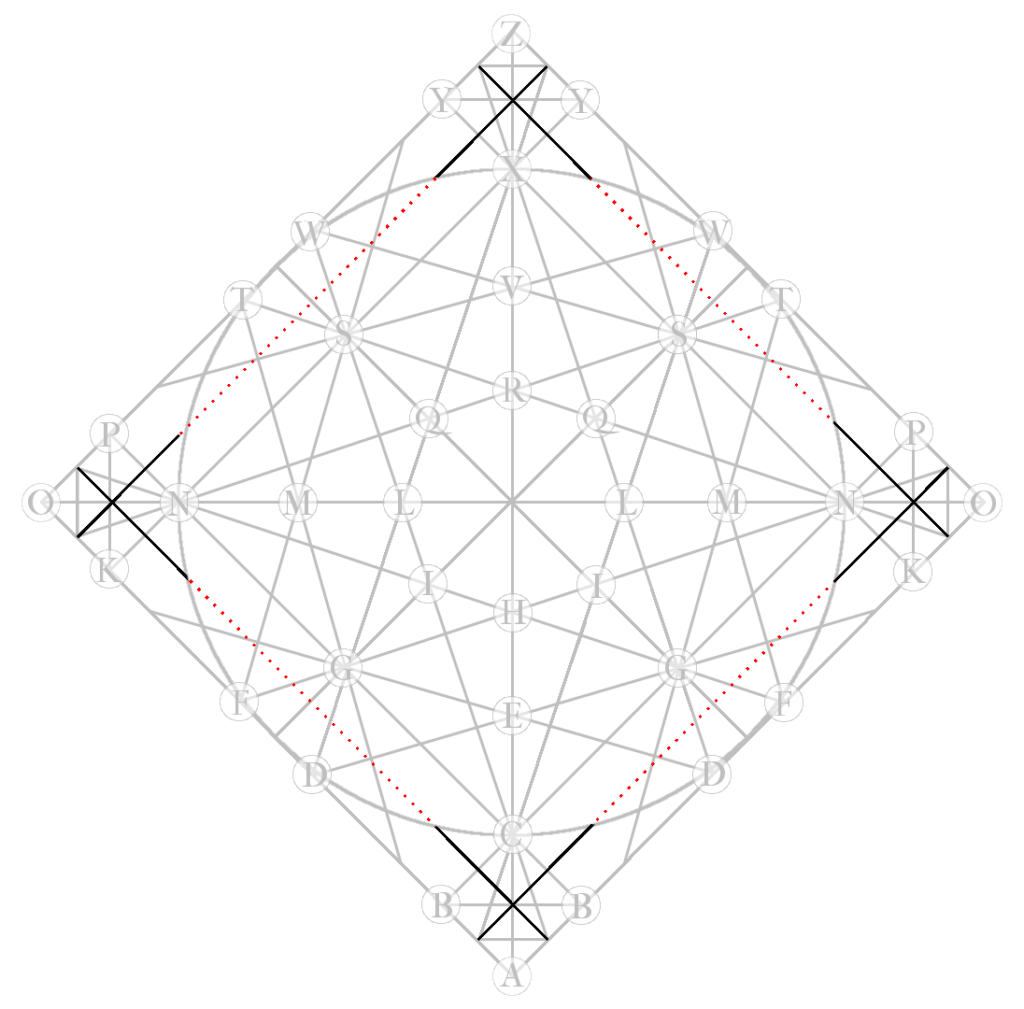
The Lengths of the Quadrates run parallel to the Circumscribed and Inscribed squares, extending from the ends of the Foot Lines until they intersect with the Circumference.
Draft the Breadths of the Quadrates

Finally, the Breadths of the Quadrates run at right angles to the nearest side of the Circumscribed Square, beginning at the point where each Length of the Quadrate intersects the Circumference and extending to the nearest end of the Outside Collateral or Outside Transverse.
The completed Circle with all of its lines and letters is shown below.

